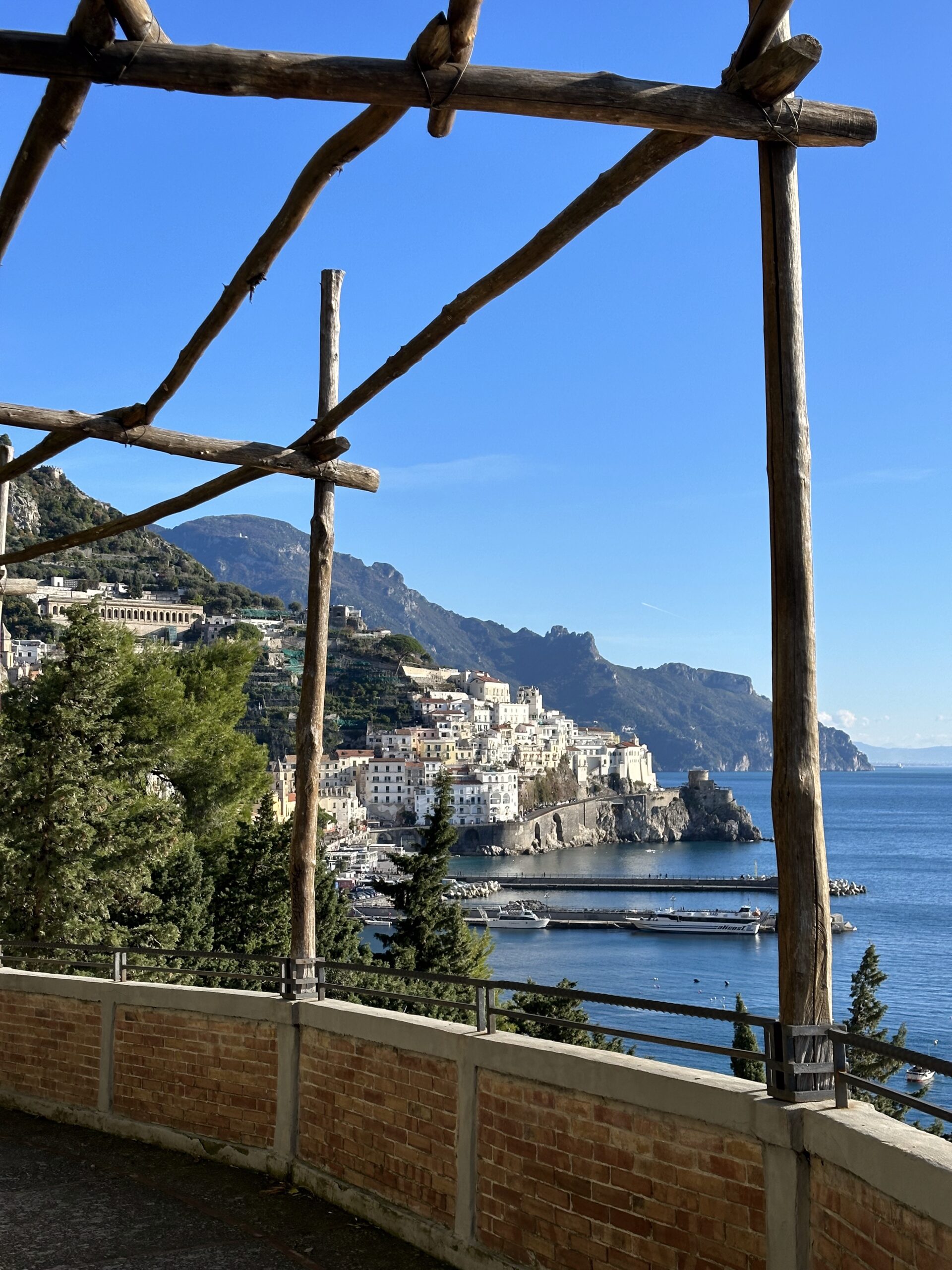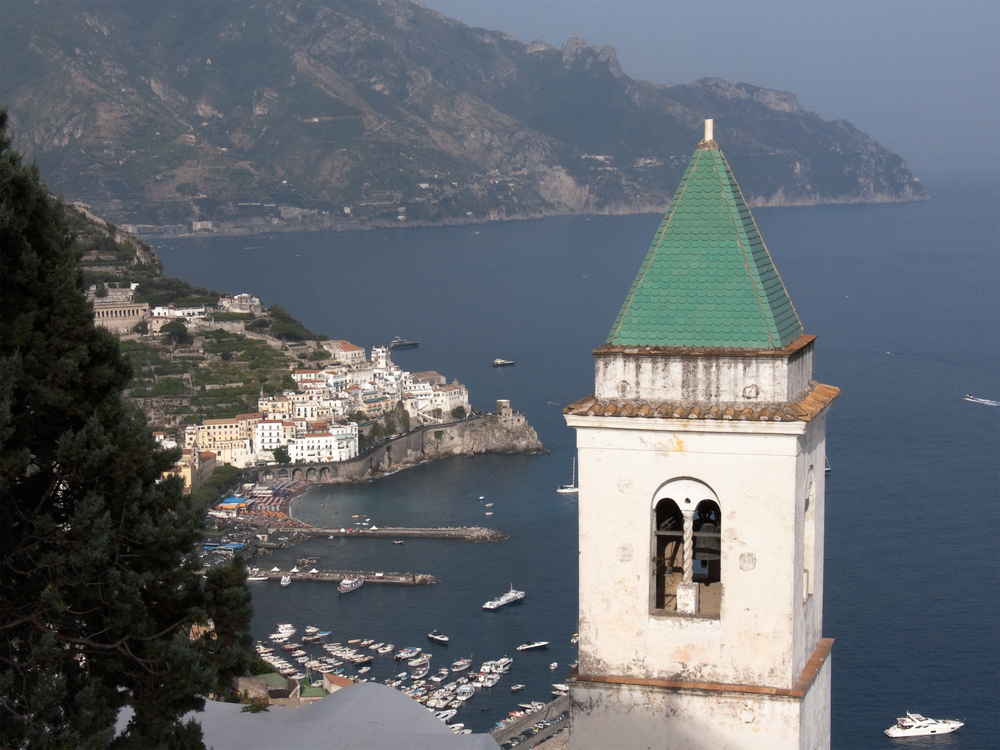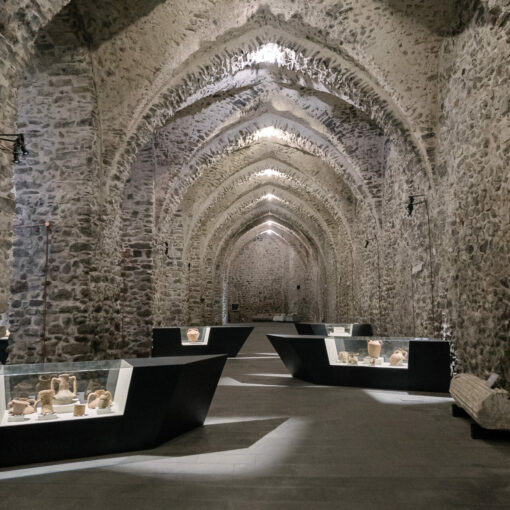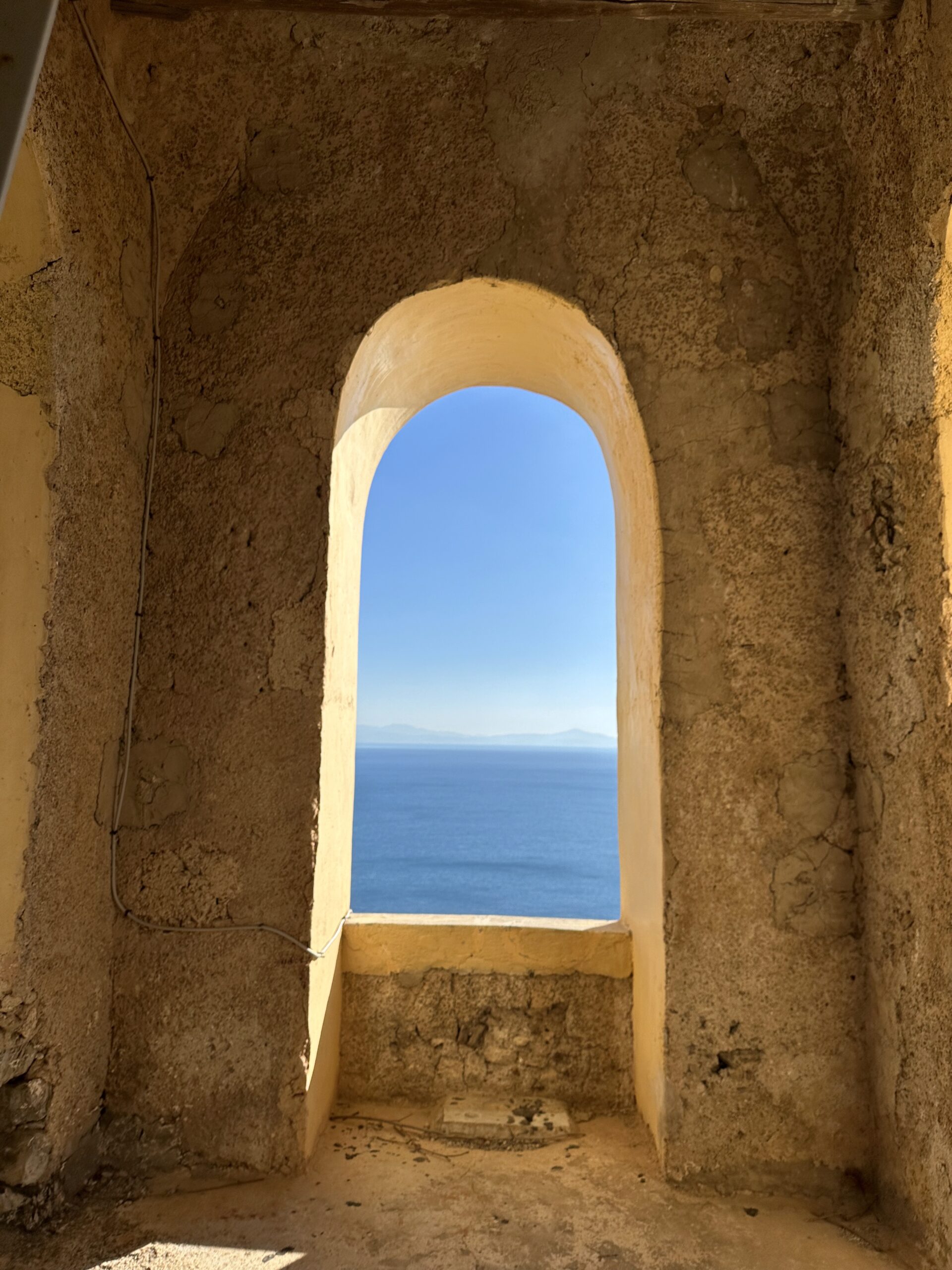Amalfi, the dazzling heart of the coast, is a place where the past lingers in the labyrinth of its alleyways and the scent of lemons drifts through the salty sea air. While most visitors lose themselves in its lively piazzas and picturesque seafront, a quieter, more intimate side of Amalfi awaits those willing to step beyond the usual paths.
The Via Maestra dei Villaggi, an ancient trail winding through historic villages, and the imposing Arsenale della Repubblica, a relic of Amalfi’s maritime dominance, tell the story of a city that was once one of the Mediterranean’s most powerful republics.
Via Maestra dei Villaggi: a journey through time
The Via Maestra dei Villaggi, or the “Main Road of the Villages,” is more than just a scenic hiking trail. This ancient path, which predates modern roads, once connected Amalfi to the inland villages of Pastena, Lone, Vettica, and Tovere before continuing up to Agerola. For centuries, it was a lifeline for traders, farmers, and travelers, carrying the pulse of daily life between the coast and the mountains.

A walk through history
Setting foot on this trail feels like stepping into a different era. The path, bordered by dry stone walls, winds past terraced lemon groves, where the famous Amalfi Coast lemons grow under the warm Mediterranean sun. As you climb higher, the sea glistens below, and the rooftops of Amalfi shrink into a mosaic of sun-bleached tiles and pastel facades.
Every step along the way is steeped in history. Small medieval churches appear like hidden treasures, their tiled bell towers standing as quiet sentinels over the landscape. Old stone houses, some still inhabited, showcase the unique architectural features of Amalfi’s past: rounded arches, vaulted ceilings, and loggias that once served as vantage points for watching the sea.
Hidden gems along the path
- Chiesa di Santa Maria del Pino: located in Pastena, this 13th-century church is said to have survived a devastating flood thanks to a miraculous intervention. A statue of the Madonna, swept away by the waters, was later found perched in a pine tree, giving the church its name. Inside, an old painting of the Madonna and Child by an Amalfitan artist preserves the devotion of centuries past.
- Chiesa di Santa Maria Assunta: this church in the village of Lone dates back to the 14th century and houses an exquisite 16th-century painting of the Assumption of Mary, attributed to Giovanni Angelo D’Amato.
- Chiesa di San Michele Arcangelo: nestled in Vettica Minore, this small 13th-century church holds a painting of the Madonna del Rosario, attributed to the Sienese painter Marco Pino.
Beyond these landmarks, the path itself is the true highlight. As you walk, you’ll encounter locals tending to their gardens, carrying on traditions that have endured for centuries. The scent of lemon blossoms fills the air, mingling with the faint aroma of herbs growing wild along the stone walls.

Practical tips for exploring Via Maestra dei Villaggi
- Difficulty: moderate. The trail is well-maintained but features several inclines and steps, making comfortable walking shoes essential.
- Duration: around 4 hours at a leisurely pace, allowing time for stops and photography.
- Best time to go: spring and autumn offer the most pleasant temperatures and the most vibrant scenery.
- Starting point: the path begins in Amalfi’s historic center, ascending through charming alleyways before reaching the countryside.
- Guided tours: hiring a local guide is highly suggested, as they share stories and historical insights along the way.
Arsenale della Repubblica: Amalfi’s maritime heart
At the heart of Amalfi’s historic district, just a short walk from the lively Piazza Duomo, lies the Arsenale della Repubblica: a silent witness to Amalfi’s glorious seafaring past. This medieval shipyard was once the lifeblood of the town, a place where warships and merchant vessels were built to navigate the Mediterranean.

A glimpse into Amalfi’s naval power
During the height of the Amalfi Republic, between the 10th and 12th centuries, the Arsenale was a bustling center of naval construction. Amalfi’s galleys, sleek and fast, were among the finest of their time, helping the republic dominate trade routes and secure its status as a maritime power. The Arsenale also played a key role in ship repairs, ensuring that Amalfi’s fleet remained a formidable force on the seas.
Today, the structure is one of the few surviving medieval arsenals in Italy. Stepping inside, visitors are greeted by soaring stone arches and dimly lit passageways that echo with the ghosts of shipbuilders and sailors. The high vaulted ceilings, supported by ten massive stone columns, create an almost cathedral-like atmosphere, an apt setting for a place that was once the backbone of Amalfi’s economy.
From shipyard to museum
Though no longer echoing with the sounds of hammers and saws, the Arsenale has found new life as a museum. The Museo della Bussola e del Ducato Marinaro di Amalfi (Museum of the Compass and the Maritime Duchy of Amalfi) offers a fascinating look into the town’s naval history.
Among the exhibits, visitors can see navigational instruments that shaped the course of maritime exploration. A particular highlight is the display dedicated to the compass: an instrument traditionally credited to the Amalfitan mariner Flavio Gioia, who, according to legend, refined its use for navigation in the early 14th century.
Another gem within the museum is the Tabula de Amalpha, a medieval maritime code that governed Mediterranean trade until the 16th century. This document is a testament to Amalfi’s influence in shaping naval law and commerce across Europe.

Visiting the Arsenale della Repubblica
- Location: just a few minutes from Amalfi’s main square, making it an easy stop before or after exploring the town.
- Opening hours: vary seasonally, so it’s best to check ahead before visiting..
The hidden soul of Amalfi
While Amalfi’s cathedral and bustling piazza draw crowds, it’s in the quiet corners of the town, along forgotten pathways and within ancient walls, that its true soul is revealed.
For those who seek more than just postcard-perfect views, these hidden treasures offer a deeper connection to Amalfi’s past. Whether walking the old village road or standing beneath the stone arches of the Arsenale, the echoes of history are everywhere: waiting to be discovered by those who dare to step off the well-trodden path.

Explore Sorrento and the Amalfi Coast with Iamme Ia!
Who better to help you navigate this area than Iamme Ia!, your expert companion. Connecting with us is easy. For more information on our tours, to make bookings, or to discuss your upcoming travel plans, please visit our tour pages or contact page on our website.
If you find yourself wandering the charming streets of Sorrento, feel free to stop by our office at Piazza Torquato Tasso 16, where our friendly staff is eager to help you plan your next unforgettable adventure. As a proud Gray Line licensee, Iamme Ia! has been committed since 2014 to not only showcasing the stunning landscapes and rich culture of the Amalfi Coast but also to providing a narrative that weaves together breathtaking views, diverse experiences, and memorable moments.
With Iamme Ia!, your journey through Italy will be more than just a visit—it will be a profound engagement with the heart and soul of the region. Let us turn your trip into an experience of a lifetime.
Remember to join our Instagram community for some extra fun content!